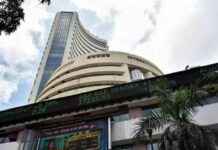Decline in NBFC Loan Sanctions in Q2: Analysis and Impact
MUMBAI: In a surprising turn of events, non-bank finance companies witnessed a significant decrease in loans sanctioned during the second quarter of FY25. This decline, both sequentially and year-on-year, has sent shockwaves through the financial industry, raising concerns about the overall health of the economy.
Factors Driving the Decline
The quarterly decrease in loan sanctions was primarily fueled by a sharp drop in gold loans, loans against shares, and unsecured business loans. On the other hand, the annual reduction can be attributed to a decline in term loans and loans against shares. These shifts have led to an industry-wide decrease in sanctions in Q2 FY25, plummeting by approximately 13% year-on-year to nearly Rs 7.8 lakh crore from Rs 8.93 lakh crore in the previous year. Additionally, there was a slight sequential decrease of 0.3% from Rs 7.82 lakh crore.
Impact on Various Sectors
The repercussions of this decline have been felt across different sectors. Gold loans, in particular, saw a significant 35% sequential drop to Rs 60,916 crore, although there was a marginal 5.7% increase year-on-year. Urban loan sanctions experienced a staggering 23% decline compared to the previous year, signaling a contraction in lending activity in metropolitan areas. Furthermore, commercial vehicle loans decreased by 8.7%, while education loans fell by 10%, highlighting the challenges faced by these sectors. Loans against securities witnessed an 18% decline, and long-term loans saw a steep 50% drop, indicating a shift in both financial institutions’ risk appetite and consumers’ borrowing preferences.
Future Outlook and Industry Response
Looking ahead, the Reserve Bank of India (RBI) has taken steps to address these concerning trends by discouraging top-up and unsecured loans. Moreover, restrictions were placed on a major finance company from extending gold loans, although this was later lifted in the third quarter. Despite the challenges faced by the industry, semi-urban and rural loan sanctions have shown modest growth, hinting at a potential shift in borrowing patterns.
In conclusion, the decline in NBFC loan sanctions in Q2 has raised critical questions about the stability of the financial sector and the broader economy. Industry players and regulators must work together to navigate these challenges and ensure a sustainable path forward.























